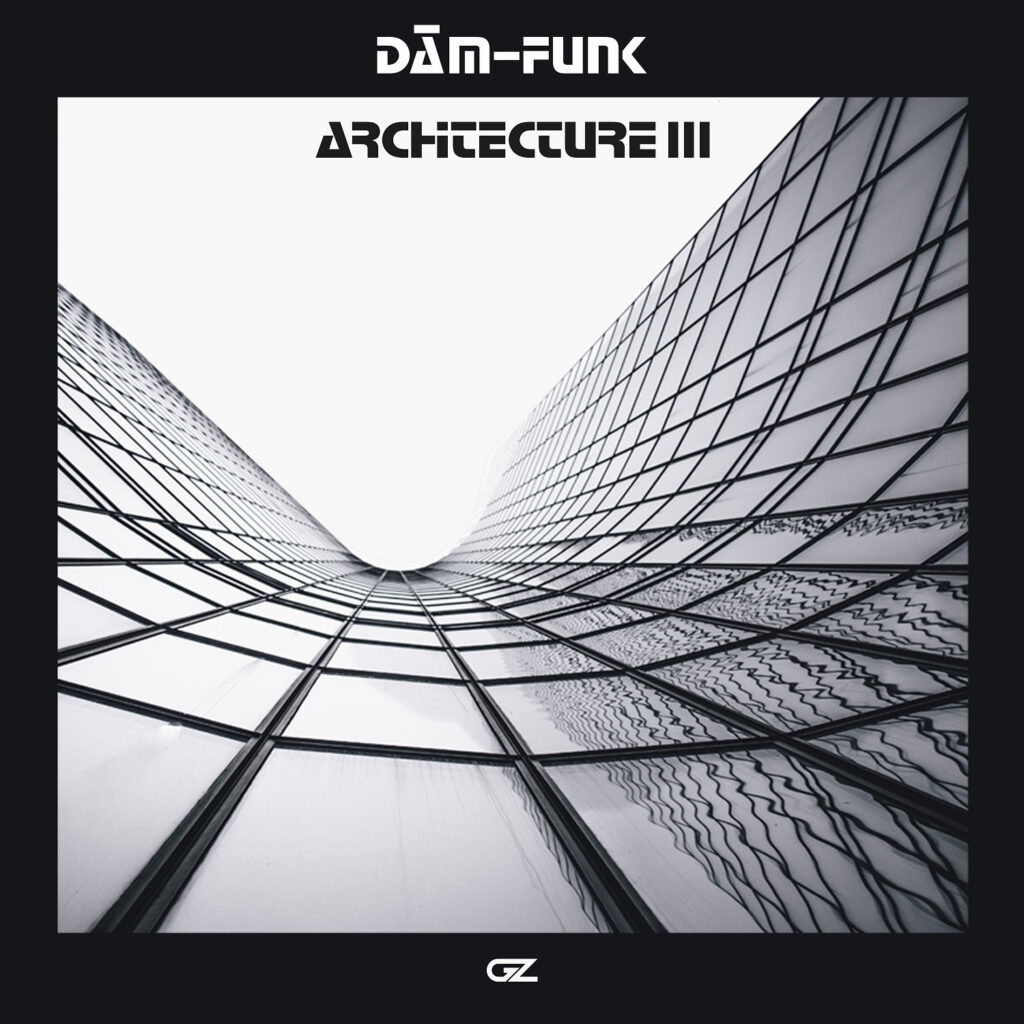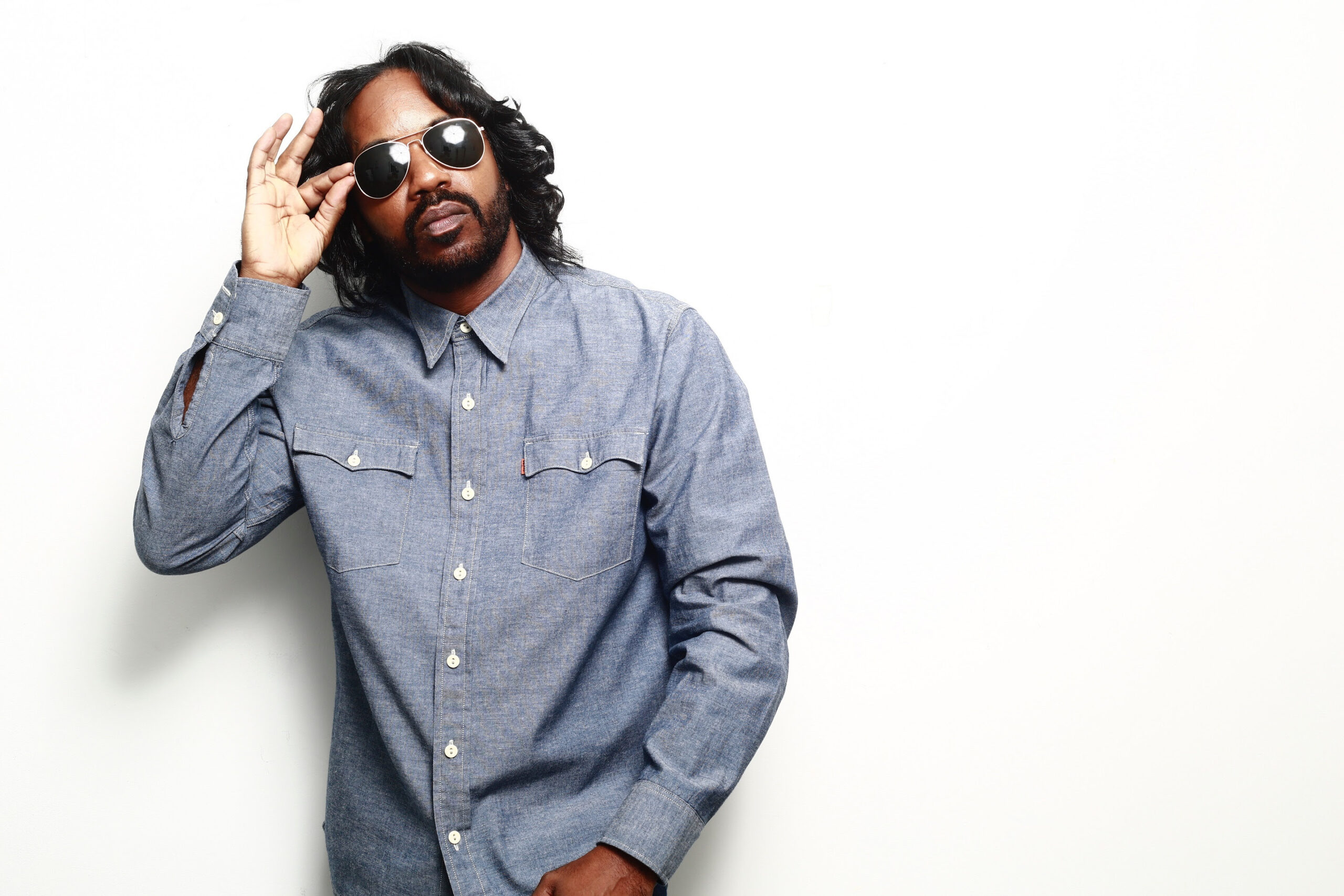Since the mid-to-late aughts DāM-FunK has been the first and foremost ambassador of the boogie and modern funk revival. He was involved with the now-defunct Funkmosphere night, a Los Angeles DJ party where vinyl was elevated. The events saw local and international guests play funk and disco rarities alongside new releases from the burgeoning LA, San Francisco, Chicago, and Montreal modern funk wave.
Some artists—who were not even associated with the Funkmosphere core group—chose to capitalize on its popular retro-kitsch angle, and even received acknowledgement by way of being awarded Grammys. But DāM never played his heritage for yuks. He took it as his personal duty to update this sometimes laughed-off era of music. Younger listeners deserved to know the tradition, so they can carry that bump into the future.
For 15 years, DāM-FunK has rallied against EDM industry trickery, producing synth-based arrangements, proving funk is indeed just as atmospheric, enveloping, and complex as any other subsection of electronic music. Past collaborations with Snoop Dogg, Steve Arrington, and Q-Tip put his talent and influence on the mainstream’s radar, shifting the paradigm of what is thought of as Black music. He connected the dots and paid tribute to his elders, such as Leon Sylvers III, who once served as his mentor in the early 1990s. Meanwhile, DāM illuminated a path for new musicians who may only have been familiar with artists like Parliament Funkadelic.
Shades of Prince’s early catalog can be found at the core of DāM’s output. Shortly after the Purple One’s passing, DāM-FunK respectfully played a four-plus hour gig of Prince’s music. DāM-FunK stated in the press that it was hearing 1999 as a kid that made him go out, buy a drum machine, and start recording tape-to-tape.
San Francisco’s own Sweater Funk Party was born in the late aughts on a sweaty and jam-packed basement dance floor at Chinatown’s Li-Po Lounge in Chinatown. It would become a sister event to Funkmosphere. DāM-FunK would sing over tracks he played there. He expanded his set past boogie and funk, much to the chagrin of Sweater Funk co-founder Jon Blunk (who was at the time more of a traditionalist.) Elements of house, electro, and techno surfaced displaying the roots of the unapologetically Black music. Then, to connect the dots to a larger Venn diagram, DāM would drop in new wave, AOR, and Italo disco, exhibiting how much synchronicity exists amongst the grooves.

DāM-FunK’s all new six-song instrumental project Architecture III speaks to all the various designs DāM can muster with his expansively produced modern-funk sound. There is an intentional idea here; he’s making listeners acknowledge that tech-house and electronica work fluidly into and out of ambient textures, atmospheric tropospheres, and mellower early versions of house.
“Night Kruise” is the head-nod theme song you can’t shake, sculpted for excursions at dawn. Sun-roof down, moonbeams in your ride, elevating that essence, putting that smoke in the predawn air. With a minimal script of a gush-rolling bass line and faint synths washing in and out, the track remains cherry with every repeat play.
“Think” comes off as a purple sunrise, with a new-wave-fussy temperament. “Feel” clocks in around six minutes, with a sly hat-tip to Larry Heard once it hits peak groove.
It’s funny. DāM purposely keeps this album short—a simple, poignant mantra, as if there is enough confusion in the world already.
With its retro ideas and contrasting progressive arrangements, Architecture III stays just enough minimal for us to ponder what else DāM-FunK can achieve within the scope of breakbeat music. This is the third edition of the series, affixed with a less-is-more philosophy displayed by its half-hour run time. It packs a laissez-faire, yet connective, aesthetic to the ever-growing funk renaissance.




